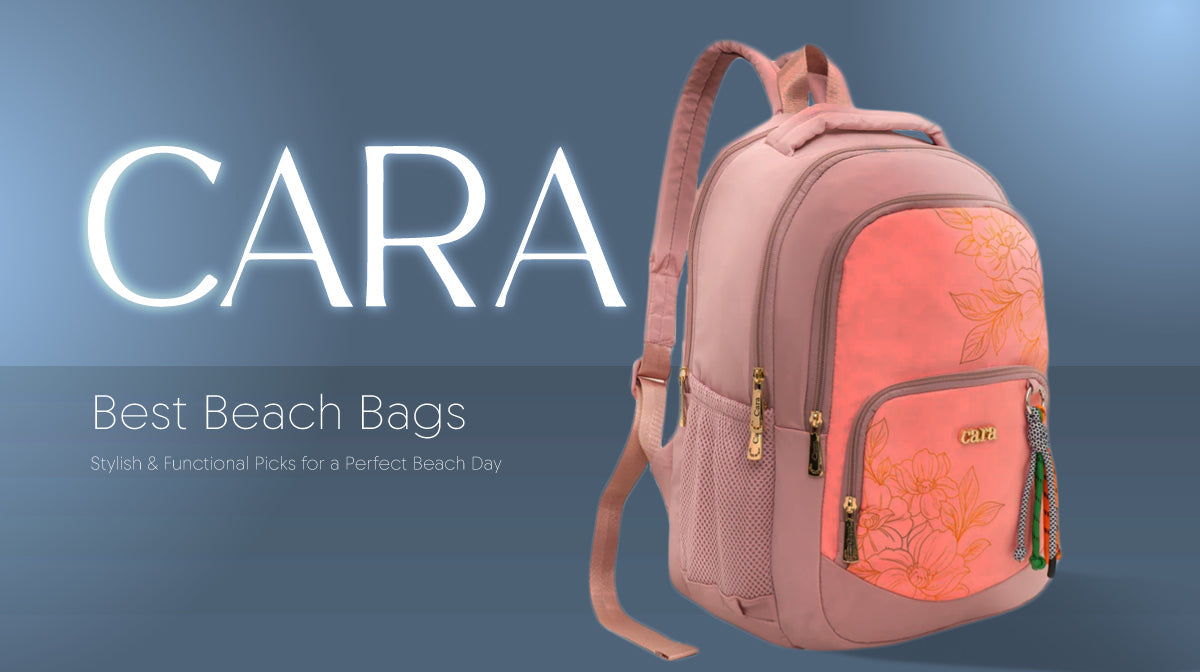
Understanding the Parts of a Backpack: A Complete Guide for Hikers
Don't start your search for the best hiking backpack by choosing a random bag because it matches your jacket or looks nice. Halfway up a trail with stiff shoulders, missing equipment, or a pack that is falling apart in the rain won't help.
In actuality, most people don't give the construction of a backpack any thought. Hiking will become much simpler once you grasp the subtle things, such as why that one strap makes such a difference or what those tiny loops do. This backpack anatomy guide can help with that.
We are not naming backpack components just for fun. The purpose of each part, how it contributes to weight distribution, where to store your necessities, and why certain features are worth every penny are all explained in detail in this book.
Ever wonder why some hikers move with ease while others find it challenging to stand up straight? It's cutting-edge equipment, not magic. The first step is to comprehend your backpack.
Knowing what to look for in a backpack is helpful if you want a pack that fits properly, keeps you organized, and works with you rather than against you. We are here to address all your doubts, so you can hike with ease and no longer carry a load once you've figured it out.
Quick question—what’s the one backpack feature you must have on a long hike? Drop it in the comments below.
Also, check out Cara Fashion’s backpack range. Our model combines comfort, innovative design, and style without overcomplicating things. It’s designed for travelers who want a reliable pack with all the essential features in the right places.
Ready to find out what each piece does? Let’s break down your backpack step by step. Keep scrolling.
Hiking Backpack Anatomy Guide & Why It Matters

Buying a hiking backpack for just size or color never justifies the comfort you want while trekking. It’s about finding the right backpack that provides comfort, features, and convenience. If your bag lacks all of these things and functionalities, then you would suffer. Understanding parts of a backpack and the functions of its components can really help you pack more efficiently by distributing weights properly and making it more comfortable to carry.
Structure Guide of a Bag
There is a basic structure that all the best hiking backpacks share. These are the main elements found on practically all bags, particularly those made for long-distance or rugged journeys.
1. The primary compartment
The majority of your equipment goes here. Consider bulkier stuff like food, clothing, sleeping bags, and so forth. While some packs have a panel opening, similar to a suitcase, for quicker access, others open from the top for top-loading convenience.
Advice: Position bulkier objects below the back or in the center. To keep things organized and weatherproof, use dry bags.
2. Zipper Lid
The top of a lot of hiking backpacks has a "lid." Typically, it contains items you need to have on hand quickly, such as a rain cover, headlamps, snacks, and maps. Some lids are removable and double as small daypacks. Handy if you’re setting up camp and heading out for shorter hikes.
3. Shoulder Straps
The majority of the weight is supported by these padded straps that fit over your shoulders. For improved balance, high-quality bags have load-lifter straps around the top that pull the bag closer to your body. Must-have features:
-
Comfortable, wide cushioning.
-
Adaptable load lifters for a personalized fit.
-
Ventilation through breathable mesh lining.
4. Belt for the hips
This is a big one. Weight is transferred from your shoulders to your hips, where your body can better support it, using a well-padded hip belt. Look for these things:
-
The right amount of padding.
-
Adjustable buckles.
-
Phone or snack pockets.
This is what frequently distinguishes the best hiking backpacks from mediocre ones.
5. Sternum Strap
A small strap that connects the shoulder straps and secures over your chest. It provides some chest support when walking and prevents them from falling off.
Additionally, it improves your control on rough terrain and aids in weight distribution.
6. The rear panel
The part of the bag that rests against your back is this one. To lessen perspiration, good back panels are cushioned and feature airflow channels.
To help the bag better fit your body, some more expensive models even have torso length adjustments.
7. Straps for Compression
These are the straps on the sides that can be adjusted (sometimes top and bottom as well). To maintain a stable burden, it is their responsibility to draw it closer. Use them to:
-
Compress the pack size when it’s not full.
-
Hold trekking poles, jackets, or tent poles externally to prevent damage.
8. Hydration Sleeve
A hydration sleeve is typically located inside the main compartment of contemporary hiking packs. It features a hole for the drinking hose to pass through and can accommodate a water bladder.
9. Pockets for water bottles
These mesh or fabric pockets, which are often located on each side, are perfect for storing small objects, sunscreen, or water bottles.
To reach your bottle without removing the pack, some bags tilt slightly forward.
10. Front Pocket or Mesh Panel
This is a fantastic place to store garbage, quick snacks, and wet weather gear. Some packs have a flexible mesh that can accommodate a surprisingly large quantity of equipment.
This one is easy to access; therefore, others can too, so don't keep valuables in it.
11. Attachment Points and Gear Loops
Check the front and bottom of your bag for any little loops or bungee cords. These are for equipment that cannot fit inside, such as:
-
Poles for trekking
-
Ice axes
-
Tripods
-
Pads for sleeping
When you use these loops correctly, you may carry heavy objects without putting any extra strain on your back.
12. Rain Cover Space
Usually concealed in a tiny bottom pocket, some backpacks have an integrated rain cover. If yours doesn’t, consider getting a separate one. Keeping your gear dry is non-negotiable when you’re in the middle of nowhere.
How Each Part of a Backpack Helps You Travel

Still unsure of the significance of all these details? Here's how being aware of the parts of your hiking backpack might aid you while you're on a real trek.
Improved Distribution of Weight
Your shoulders won't hurt after a few miles if you use the load lifters and hip belt properly. That's a victory.
Quicker Access
You can avoid searching through your entire pack in the middle of a trek if you know what's in the mesh panel, side pockets, or lid.
More Secure Packaging
You're prepared for anything that comes on the route when you know where to store supplies like a raincoat, water, and a first aid kit.
Better Purchases
Understanding the backpack anatomy guide will answer any questions you may have about why two backpacks have such different pricing. The investment is well worth it when a backpack is made from high-quality materials and features a clever design.
Tips to Buy the Perfect Backpack

Once you have an understanding of how backpacks are made, choosing one will be simple. Here is a simple checklist:
-
Trip length: Weekend hikes typically require smaller bags (30-50L), while longer treks may necessitate bags of 60L or larger.
-
Fit: Always try it on with weight in it. How do the hip belt and shoulder straps fit?
-
Features: Hydration sleeve, weather resistance, adjustable torso.
-
Weight: Lighter packs are wonderful, unless they compromise support.
-
Organization: Choose a structure that makes sense for how you pack.
Even if you have experienced backpacking already, simple changes can still improve the experience:
-
Use smaller stuff sacks to organize food and gear internally.
-
Avoid overstuffing side pockets—they can affect balance and lead to overburdening your neck.
-
Once you have finished packing your backpack, tighten the compression straps to secure it in place.
-
Wherever possible and practical, keep heavier items low and centre.
-
Practice adjusting your pack before you start your trek.
-
Ultimately, you want your pack to feel like a part of your body, not a burden.
Final Thoughts: A Backpack is the Best Travel Companion
Let's be honest. You can choose any hiking bag from the store and hope for the best. On a lengthy path, however, you need more than a random bag if you want comfort and control. Instead of working against your body, the perfect hiking backpack complements it.
Things will be easier if you understand the anatomy of a hiking backpack. You'll be able to tell which strap relieves your burden. When the terrain becomes steep, you'll realize why compression straps are essential. Additionally, you will no longer store your rain jacket in the deepest section of the bag.
This goes beyond features. It's about authentic trail experiences, where having a sturdy hip belt or easy access to a water bottle may greatly reduce tension. Each component of a backpack has a distinct function. You have an advantage if you're familiar with those parts.
The takeaway is as follows. Pick your backpack as you would a hiking companion. Look for creative design, comfort, and functionality. A decent backpack does more than just hold your belongings. It will improve the entire journey.
Cara Fashion developed the backpacks with hikers in mind. They have everything you need, including a ventilated back panel, padded support, easy-access compartments, and the perfect fit. You don't require a large, sophisticated beast. A thoughtfully designed bag made for everyday use.
Do you have your own tip for using backpack space more efficiently? Share it with us—we’d love to hear how you pack smarter.
And if you're still trying to decide which backpack is worth it, head to Cara Fashion’s site and explore the details that actually make a difference. The right gear changes everything.
Your next hike starts with a smarter pack. Let’s make sure you’re carrying the right one.
FAQs about the Parts of a Backpack
1. What are the most essential parts of a hiking backpack?
The most crucial parts of a hiking backpack include the shoulder straps, hip belt, back panel, load lifters, sternum strap, and internal or external frame. These components work together to provide support, balance, and comfort while carrying your load on the trail.
2. Why is understanding backpack anatomy essential for hikers?
Understanding the anatomy of a hiking backpack helps hikers choose a pack that fits appropriately and distributes weight effectively. A well-designed pack prevents discomfort, improves posture, and makes long hikes easier by reducing stress on your shoulders and spine.
3. What is the difference between internal and external frames in backpacks?
An internal frame is hidden inside the backpack and contours to your back, offering better balance and flexibility — ideal for rugged trails. An external frame sits outside the pack and provides a rigid structure, best for carrying heavy, bulky gear over even terrain.
4. How do load lifters work on a hiking backpack?
Load lifters are small adjustable straps that connect the shoulder straps to the top of the backpack. They pull the weight of the pack closer to your body, improving balance and reducing shoulder strain — a key feature in premium hiking backpack parts.
5. What should I look for in a backpack’s hip belt?
A good hip belt should be padded, adjustable, and wide enough to transfer 60–80% of the pack’s weight to your hips. This is essential for maintaining comfort on long hikes and is a key element in any well-designed backpack anatomy guide.




